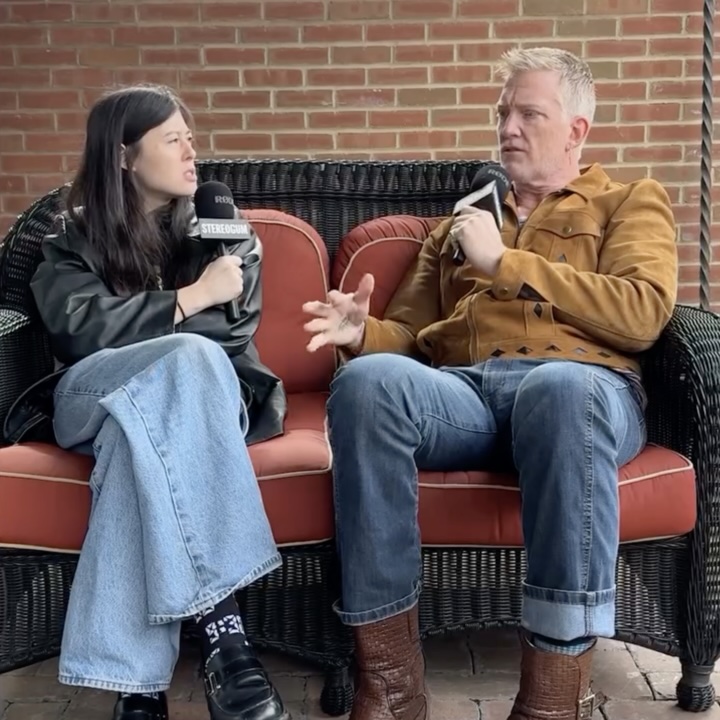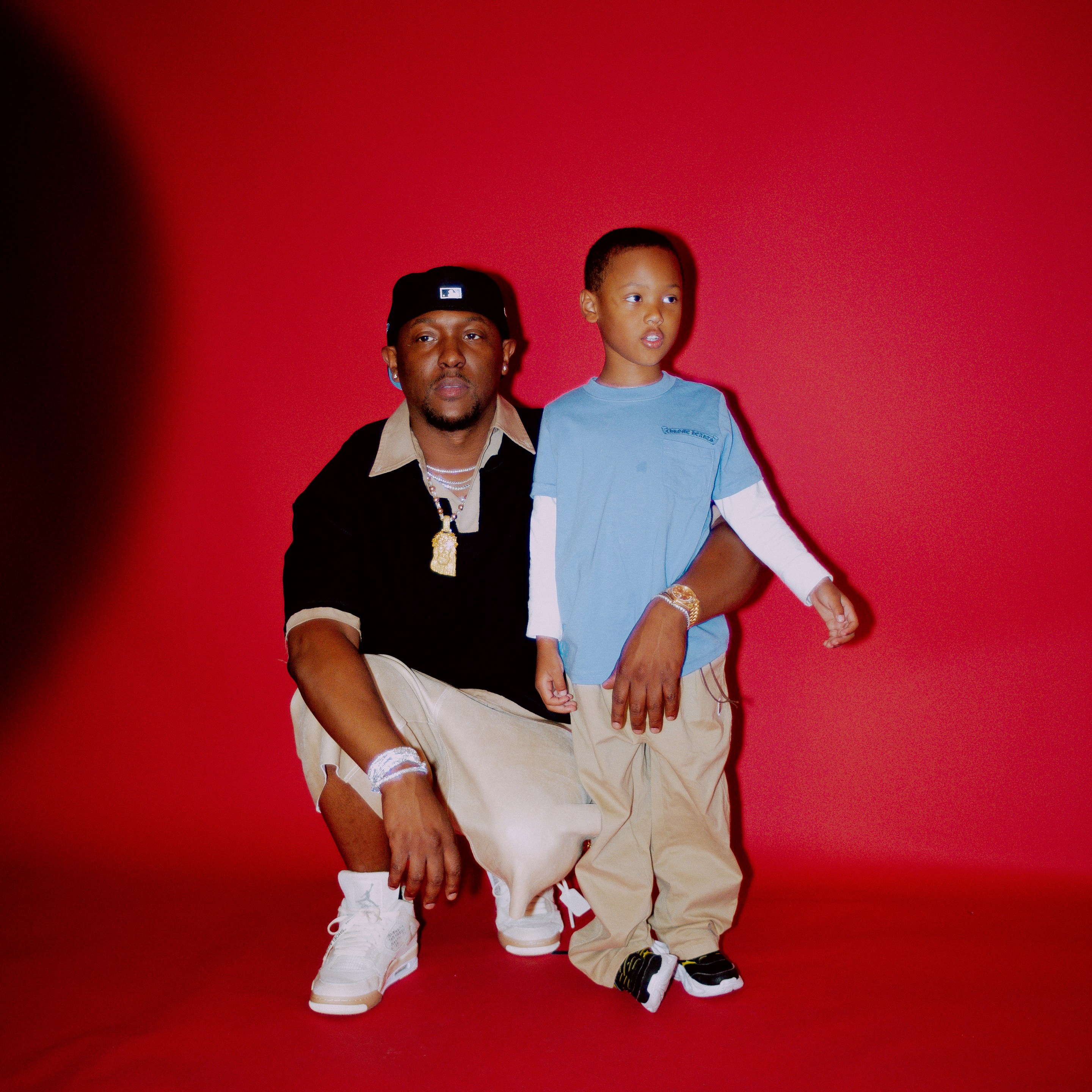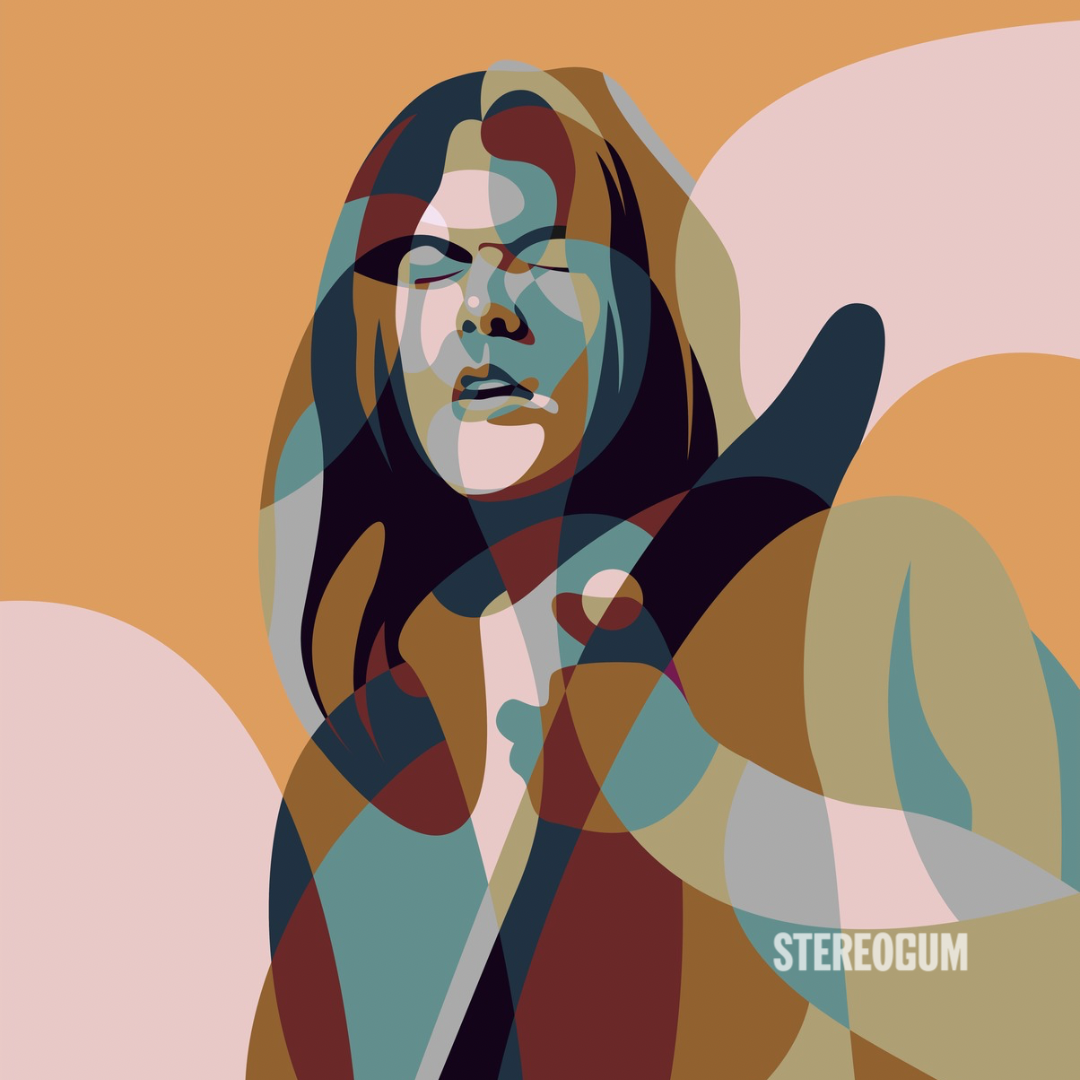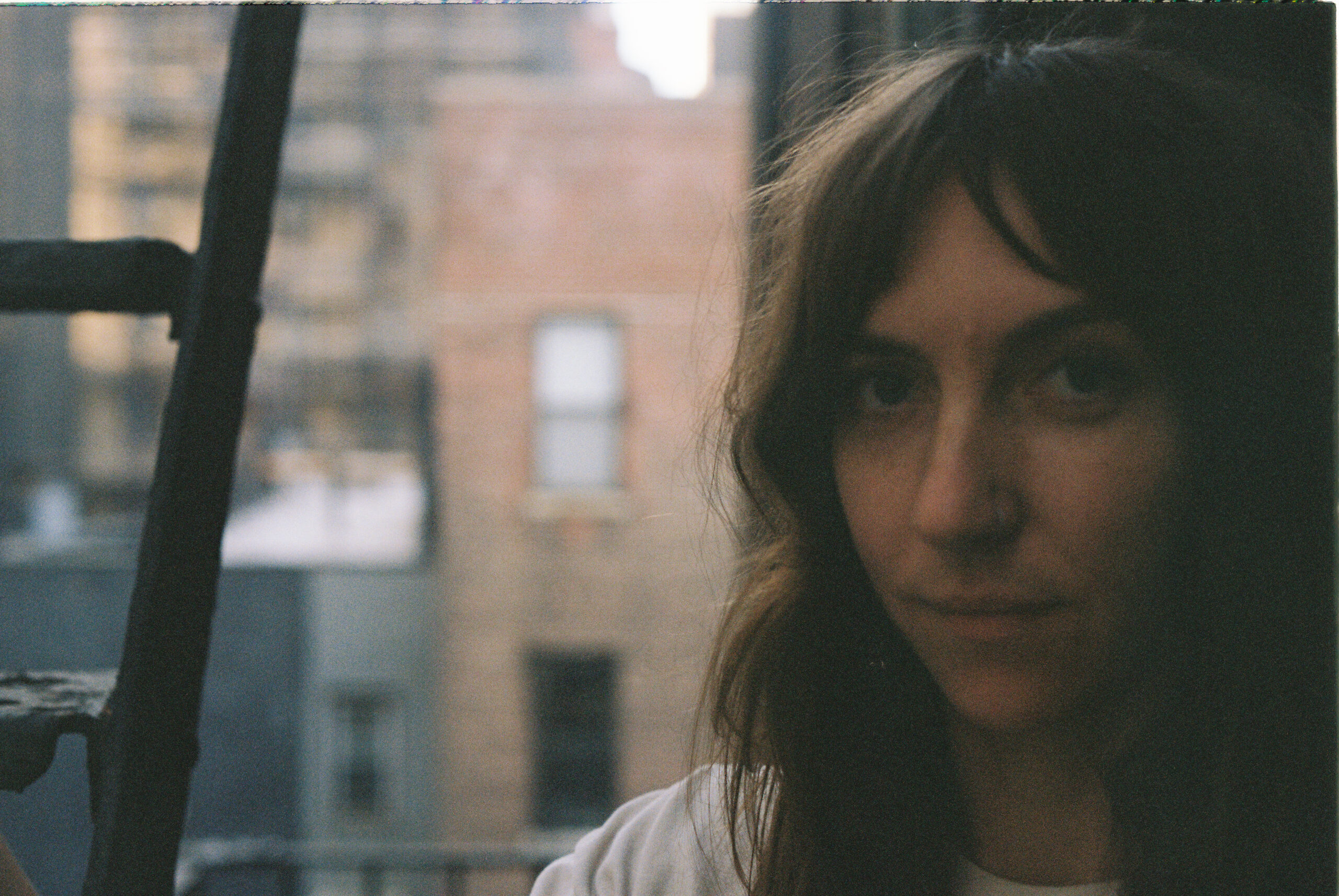It is not possible to overstate the importance of Kim Deal. As a member of the Pixies and a founding member of the Breeders, she has made some of the most deeply compelling -- not to mention some of the most compellingly influential -- music of the past three decades. Though she is not currently playing in the Pixies (a subject that she is very happy not to talk about), she is no less busy than she has ever been. The Breeders recently wrapped up a lengthy tour in celebration of the 20th anniversary their seminal 1993 album, Last Splash. The tour proved to be such a success (and apparently such a good time) that the band -- featuring the Last Splash-era lineup of Kim and Kelley Deal, Josephine Wiggs, and Jim Macpherson -- are currently working on music together for an all-new Breeders record. In addition, Kim continues to release music in her ongoing 7" solo series. The fourth installment in that series -- two songs recorded with LA musician Morgan Nagler ("The Root" and "Range On Castle") -- was released on April 1. Much like the other singles in the series, Deal's latest release is a decidedly lo-fi and somewhat scrappy affair -- a kind of playful, somewhat insouciant version of what Deal does so well on her full-length endeavors. Still, it would be wrong to think of her singles as somehow less serious or mindfully conceived. Taken as a whole, the eight songs Deal has released so far via the singles represent some of her most sublime and most Kim Deal-iest music to date, not to mention some of the loveliest. After speaking to Deal about her work, it's easy to see why so many legions of music fans remain obsessed with her. She has an almost workmanlike devotion to music-making and clearly doesn't give too much of a fuck about the rest of the music business. While so many of her contemporaries have burned out, retired, or simply given in to the easy lure of becoming a nostalgia act, Kim Deal -- one of rock music's most fantastically individual talents -- just becomes more and more herself.
STEREOGUM: How are you?
KIM DEAL: I'm good. It's Dayton, Ohio. But it's got sun today and little buds on the trees, dammit.
STEREOGUM: Finally. This has been the longest winter ever. I know you guys were traveling so much for the past year or so. Is it good to be home for a while?
DEAL: It is. You know, Josephine lives in Brooklyn with her girlfriend. She just got in a car and drove all the way out here to Dayton. She's here now. We're doing some recording in the basement. Me, Kelley, Josephine, and Jim.
STEREOGUM: I actually saw three of the Last Splash shows, which were so much fun. Were you surprised by the reaction? The fans at the shows I attended were VERY enthusiastic.
DEAL: Yes. The people were very, very happy. They were singing along. It was like, "God, you know the lyrics to every single song? Every single lyric?" It was weird. It was really great.
STEREOGUM: It must be cool to basically spend a year touring for that and having this very in-your-face reminder that this thing you've made has continued to have this incredible life out in the world.
DEAL: Yeah, it's really nice.
STEREOGUM: I've been listening to your solo singles as you've been releasing them. It's funny because I've been listening to these songs from the 7" singles on my computer and putting them in one playlist, as if they were an album.
DEAL: Do you have a sequence?
STEREOGUM: I think it's just the order in which they were released. It actually kinda makes sense, listening to them as a record. I understand the appeal of doing one-off singles and the pleasures of that, but it made me wonder if you were ever tempted to just put out a Kim Deal solo record.
DEAL: No, not really, mainly because I've always loved bands. Living in Dayton, Ohio when I grew up, there was a lot of Jim Messina or Jim Croce -- singer/songwriter stuff. There were a lot of people around town then trying to do that kind of thing. Wait, how old are you?
STEREOGUM: Almost 40.
DEAL: Okay so you wouldn't necessarily know what I'm talking about, but I'm sure you do. Where did you grow up?
STEREOGUM: I grew up in a tiny farm town in Oklahoma, which is its own type of weirdness. A place like Dayton would be a metropolis compared to the town I grew up in.
DEAL: [laughs] Oh my god, ok. So anyway, all I wanted to do was be in bands. That's all I wanted to do. I was so bummed out because rock bands do not want girls in their band at all. There were just no girls in the bands in Dayton, Ohio. Even Pollard from GBV would say "no bleeders." And he's acting like he's joking but everyone knows he's not joking. "No bleeders in the band." So I always just wanted to be in bands and no one around here would play. So I wasn't really drawn to doing solo stuff. It just always seemed like it wasn't the cool thing to do. I wanted to be in a band. It never really occurred to me [to go solo]. And then ... well, the industry changed and the band lineup of the Breeders that did Title TK and Mountain Battles and Fate To Fatal -- the longest lineup for Breeders there's ever been, with Jose and Mondo -- they eventually had families. Jose moved to Portland and has a beautiful drum shop called Revival. It's really nice. I walk in and I want, like, five of the sets immediately. Mondo, the bass player, lives in East L.A. still. That's where I lived when I was playing with them. But he has a kid and Jose has a kid. And now the industry doesn't pay enough for a small band like the Breeders. It was expensive getting us together to work. They need a day job. They have sons.
STEREOGUM: That makes sense.
DEAL: So I always had a studio, even when I was a teenager living at home. I had a Tascam 38 8-track. I would make my own cords and solder them. I'd buy a spool of cable and make my own cords. I had all these patches that I created and it got ridiculously complicated. I still kind of do that all the time. Right now I've got a 338 quarter inch thing, you know they look like a big four-track Tascam? They break all the time. It's consumer grade, man. It always breaks. It never really works. I ended up getting that and it's driving the Tascam 16-track half inch, so I'm really liking that. I'm using the 338 as a pre-amp for recording onto the 16-track ... wait, what was my point in talking about gear? All I want to do is talk about gear. I've got the sweetest microphones here at my house and I can talk about them all day. But anyway, my point is that I've always done this. The first 7" single kinda happened when I went to Australia. I was on a tour and just stayed late and got into a studio in Melbourne. It was the first time I went into the studio and thought that this was something for Kim Deal. I just didn't know what it was.
STEREOGUM: I know for a lot of artists the whole rigmarole involved when making a record with a label and then waiting around for it to be released and doing all the promotion stuff ... it can be really tedious. It must be nice to make something at your own pace and then just immediately put it out.
DEAL: It's true. Mountain Battles was the last thing I did on a label. Then Breeders did something in 2009 ... we did an EP and I pressed that and put it out on my own, which was called Fate To Fatal. That was the first thing that I had done like that. I really enjoyed it. I'm such a dork. I liked the manufacturing, getting the mothers mastered and cut, and then getting into line at the pressing plant.
STEREOGUM: For Fate To Fatal didn't you guys make, like, a million screenprints for the sleeves?
DEAL: Yeah! We hand screened them with Chris Glass, with Wire and Twine in Cincinnati. He did the artwork. It looks killer.
STEREOGUM: I love that part of the process. I'm not a musician but I've helped many of my friends assemble 7" singles or print T-shirts. Something about it appeals to me. Maybe it's the OCD part of it.
DEAL: Probably, yeah. You know, I had these ideas for songs. Some of them I had recorded. It was back in, I think, 2011 and I was going to go to Portland and then Los Angeles. I was going to get players and record some stuff. I thought, "I'm going to go where the players are!" because there are none of them in Dayton, at least not too many. I go and hit Jose; he's up in Portland. And Manny Nieto, who came up there and recorded me. I had also gone to Jackpot and recorded with M. Ward. Jose had introduced me to M. Ward. He was nice. And then I went down to LA ... and that was the end of summer in 2011. Some of the songs I really liked and I ended up recording one of them at Five Star, which is a 24-track studio. But for some of them I liked the demo version where the drums were done on a 4-track. It didn't make sense to try and force them all together. How would I possibly have different players on each song? Totally different players, totally different recordings and different instrumentation and different fidelity quality? It didn't make sense. Recently somebody told me that Mike Watt did something like that -- where it was all different like that and that was sort of the theme. If I were smart maybe I would've done that -- just presented an album's worth of tracks that were all done differently and recorded differently and with differing sound qualities. But I didn't think of that. I thought that it's not going to be a good listening experience, mostly because of the different recording qualities. I wasn't giving people the benefit of the doubt. I guess people listen to all sorts of things now.
STEREOGUM: But I think putting them out as singles is cool. It makes it more special somehow. For those of us who came of age and were/are totally nerdist record-buyers, I think there's a sweetness to these special objects. You don't get to have that experience much anymore with people's music.
DEAL: Right, and I know that it's like a vinyl toy. Still, I can't help but think if I don't release it in a physical product then it's like I just emailed my sister my release. If I just make a download of it doesn't feel like it ever got released. I need a place to write down the name of the song, or it else it doesn't even feel like that. Even though there's only a couple thousand pressed up and they probably won't sell, if it was just available for download it wouldn't feel like I did anything. Other people can do things that way, I'm not saying it's not doing something. I'm just saying for me because I'm so used to this process. I like putting everything together and saying "this is what it would look like."
STEREOGUM: So you have another one already in the wings, right? With Britt Walford?
DEAL: Yes. I just back from Chicago and we were working on that. Brit's really busy. He's doing the Spiderland thing with Slint now. I guess Lance Bangs did the documentary, Breadcrumb Trail. Have you seen it?
STEREOGUM: I haven't. But I really want to.
DEAL: Me too! Brit's supposed to be a real weirdo in the movie. [laughs] I bet he is, too. I saw him last summer and I texted him, "Would you ever want to come up and play? I'm doing a solo series. Would you ever want to come up and play with me one of these songs?" He said he'd love to do that. So he came up, we did a demo recording, then drove up to Chicago to Albini's studio and we just got back. It sounds really good, I think. The other half, the B-side, is sitting at Sterling Masters in New York. That's been mastered. So when I get this one, I'll send it to Sterling and get it mastered and that will be the fifth 7". But you know, the pressing plants have a three month wait and not all of them do 7-inches, so it still takes a little while. I really enjoy figuring out all the production. The way I was even able to do it was that I called up Bob Weston and picked his brain back in 2009. How do you even get a 7" made? He gave me a lot of good advice back then. Luckily everything is on Google and YouTube now and they'll show you how to do it.
STEREOGUM: YouTube University.
DEAL: [laughs] That's good. I've never heard of that.
STEREOGUM: What's funny with listening to all these tracks assembled in one playlist is the range of moods. "Are You Mine" is just such a beautiful song.
DEAL: Thanks.
STEREOGUM: You've been making music for a long time now. Do you feel like think your way of working -- your way of writing -- has changed radically over the years? Do you have the same general process that you follow?
DEAL: I'm sure it has changed. I guess I started playing the guitar at 13. So I'm sure it's changed a lot. I'm sure it was better then. [laughs] Now I suck. I don't know. I enjoy playing different instruments. I enjoy playing bass. I really love to play drums. Before I would've only started on guitar. I would pick up my acoustic and put something together and go, "Okay this is the song," but now I'm just as likely to come up with the drum beat and think "This is going to be a great song!" So yeah ... it probably has changed a lot.
STEREOGUM: So I know Josephine lives here in Brooklyn, where does Jim live?
DEAL: Jim lives here, too. He lives like six minutes away.
STEREOGUM: You and Kelley and Jim and Josephine are all recording together right now. How's it going?
DEAL: I don't know. Today we're working on Josephine's song and it's sounding really good. I've got a good melody line for it and got some lyrics. So that's what we're going to be recording today, one of her songs. Then I've got two that have lyrics and a melody line but I don't like the drum part on one of them. The other one sounds pretty cool. We'll probably get those three going. And I have other songs. There's one song that I really like but I don't think Josephine likes so much, but I really like it.
STEREOGUM: Did you find that playing all of those Last Splash shows together sort or reignited this great dynamic between the four of you?
DEAL: I don't know. Kelly was sitting on the couch in late Spring 2012 and she said next year is the 20th year anniversary of Last Splash. We should play some shows with Josephine and Jim. I think I texted one of them and Kelly texted the other. But you never really know how everything got left. Like, was anybody mad at me? We had played with Josephine in 2005 over in Los Angeles at 4AD's 20th anniversary. Also when Mondo, the bass player in Breeders, had a baby and it came early, Josephine came in and learned all these songs from Mountain Battles and finished up the tour for him. But I don't know, Jim might've been mad at me. But he's super sweet and it is so nice to be playing with him again. I'm really loving it.
STEREOGUM: That's so funny. Do you guys feel like you've mellowed? I feel like as I get older, I learn not to stress over the same shit that drove you crazy in your twenties. Do you feel like the dynamic is easier?
DEAL: It does, actually. Although sometimes when Josephine looks at me and says [talks in a British accent], "I've gone off of the chord C. I don't really like it." I sometimes look at her and just go, "I want to cut your throat, bitch." [laughs] I've told her this -- she kind of reminds me of that Emma Thompson movie, Saving Mr Banks. You know, the woman who wrote Mary Poppins will say things like, "I've gone off the color red. I no longer like it." Josephine will say things like that. I'm showing her a song, and there are C's in it. I'm like, oh my god. And I tell her this and she's like, "No, no! I don't mean all the time! I just mean right then."
STEREOGUM: For what it's worth, seeing you guys play those Last Splash songs was meaningful. You see bands get back together and it's not always like that.
DEAL: We really had a good time this year.
STEREOGUM: What do you think the rest of this year will be like for you?
DEAL: Well, Josephine is staying here now. I mean, we can't get rid of her! [laughs] No, I think we're going to keep trying. We're down in the basement recording and the songs are sounding good. And honestly, I don't know what else to do. This is what I like to do. I like to record and play songs. I don't think there's much of an industry for it these days, but that's just what I do, you know?
STEREOGUM: Do you find that you do badly with downtime? Do you need to have a project to be working on?
DEAL: I kind of always do have something to be working on because there's always going to be a microphone I'm going to be obsessed by. I love my recording setup. It is nice. I've had a studio since my teens. It's all I do. It's like working on cars. You know how some people just like to work on cars? Music is like that for me. I don't do it every single day, but there's always something to work on.
STEREOGUM: Do you enjoy being on tour? I know Kelley said the tour was really fun but she was also glad to be back home.
DEAL: We were ready for her to go away. [laughs] Yeah, sometimes ... you know, the traveling get old. Another early flight and you're wondering, "why can't I just be in my bed, binging on something?" But then of course when I'm off of tour I'm wondering why I can't be overseas. Why can't I be in Paris right now? Not doing anything in Paris instead of not doing anything in Dayton.
STEREOGUM: You've spent some time living in other places. Could you imagine going back to LA to live for a while?
DEAL: I've stayed there in the '90s at the Oakwood apartments. Then I lived in East LA from 2000 to 2002. I liked that okay. But I never considered that part of LA. I've visited LA many times and I never really loved it, but I really, really loved it this past time when I went out there and stayed for a year, half of 2011 into 2012. My house was fucking beautiful. I rented a house. It had a wine cellar with flagstone floors and the sheetrock wall. Everything sounded beautiful. I had my studio setup down there. People would come over and play and there were so many good players. It was so fun.
STEREOGUM: I'm excited to see what happens with you guys recording.
DEAL: The Breeders stuff? Yeah. And the next 7" should be cool. It's funny, we were working in Albini's studio and I think Steve had just seen that band Mayhem with his wife -- I think it was Mayhem -- and he was saying that in between songs, like, while somebody is tuning or something the singer would step up to the microphone and go, "More frost!" or "More kingdoms!" [laughs] So the song we did with Brit is pretty heavy. We were inspired by that. I was going to tell you that the next song will definitely have "More frost!"
STEREOGUM: That sounds like a funny thing to yell out at the sound guys. The next time you are doing sound check before a show. "I need more frost in my monitors."
DEAL: [laughs] Then next show I do I'm definitely yelling that at the sound guys. "Check, Check, One, Two ... I'm sorry, but I'm gonna need a LOT more frost up here."
[videoembed size="full_width" alignment="center"][/videoembed]
More info about Kim Deal's solo 7" series can be found here
[Photo by Chris Glass, courtesy of Kim Deal.]






